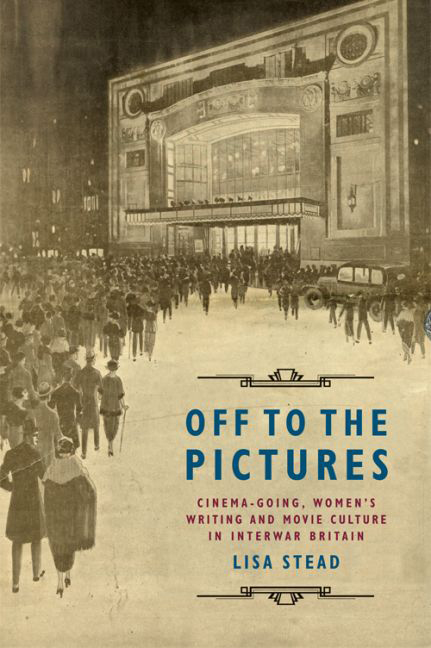Book contents
- Frontmatter
- Contents
- List of Figures
- Acknowledgements
- Dedication
- Introduction
- 1 Off to the Pictures: Cinema, Fiction and Interwar Culture
- 2 Screen Fantasies: Tie-ins and the Short Story
- 3 Middlebrow Modernity: Class, Cinema-going and Selfhood
- 4 Wander, Watch, Repeat: Jean Rhys and Cinema
- 5 Film Talk: C. A. Lejeune and the Female Film Critic
- 6 Elinor Glyn: Intermedial Romance and Authorial Stardom
- Afterword
- Bibliography
- Index
4 - Wander, Watch, Repeat: Jean Rhys and Cinema
Published online by Cambridge University Press: 15 September 2017
- Frontmatter
- Contents
- List of Figures
- Acknowledgements
- Dedication
- Introduction
- 1 Off to the Pictures: Cinema, Fiction and Interwar Culture
- 2 Screen Fantasies: Tie-ins and the Short Story
- 3 Middlebrow Modernity: Class, Cinema-going and Selfhood
- 4 Wander, Watch, Repeat: Jean Rhys and Cinema
- 5 Film Talk: C. A. Lejeune and the Female Film Critic
- 6 Elinor Glyn: Intermedial Romance and Authorial Stardom
- Afterword
- Bibliography
- Index
Summary
Another Pernod in the bar next door to the cinema. I sit at a corner table and sip it respectably, with lowered eyes. Je suis une femme convenable, just come out of the nearest cinema…. Now I really am O.K., chère madame.
J. RhysFilms and cinemas repeatedly surface within Jean Rhys's interwar fiction. Sasha, the protagonist of Good Morning, Midnight, uses cinema in the passage above to assert, silently, a feigned normality. She performs the role of ‘respectable’ woman in the public city space by deferring to the mundane nature of cinema-going at this time. Across Rhys's quartette of early novels, cinema is used recurrently, offering both sanctuary and troubling space of exposure for her wandering, outsider heroines. Born in Dominica in 1890 and coming to England at the age of 16, Rhys began writing relatively late in her life, publishing her first collection of short stories under the encouragement of Ford Madox Ford in 1927 and proceeding to release four short novels between the wars. Her early fiction proved critically and commercially unsuccessful on its initial release; it swiftly fell out of print, as Rhys effectively dropped off the literary map for the next thirty years until the publication of the text for which she is today best known: the Jane Eyre inspired Wide Sargasso Sea (1966). The novel's critical success sparked interest in her earlier works, which were returned to print with André Deutsch and W. W. Norton in 1967 and 1969, and have been more recently reissued with Penguin Classics in the early 2000s.
The presence of film and cinema-going in Rhys's writings has been relatively overlooked in critical literature. This is a surprising omission, in light of the considerable attention that Rhys gives to the role that films and cinemas play in the lives of her female characters. This chapter seeks to address this gap, focusing on three significant strands in Rhys's use of cinema across her interlinked interwar European novels. I first examine her attention to urban geography and female movement, considering how she mapped city spaces through cinema visits. Rhys's novels use cinema sites to construct a layered geography of memory and present experience for her female characters, mediated through locally specific choices in cinema venues.
- Type
- Chapter
- Information
- Off to the PicturesCinemagoing, Women's Writing and Movie Culture in Interwar Britain, pp. 93 - 126Publisher: Edinburgh University PressPrint publication year: 2016



